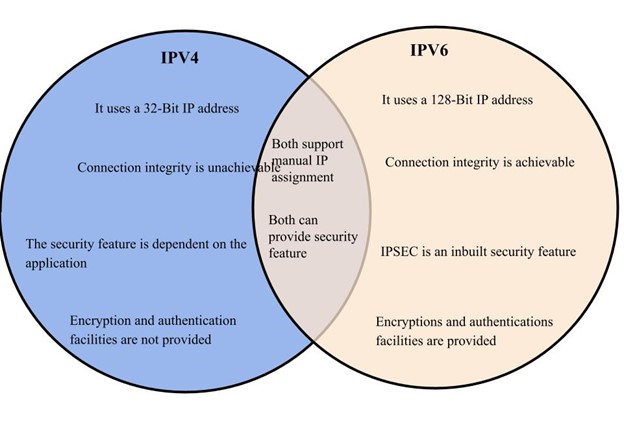Difference between IPv4 and IPv6
Every computer, mobile phone, and other electronic gadget connected to the internet needs a numerical IP address to communicate with other devices. An IP address is thus created as the intermediary through which computers pass information to one another. A numerical label is ascribed to every device connected to a computer network that uses the IP protocol to communicate and transfer information. It also ensures the development of a virtual connection between a destination and a source.
IPv4[edit]
IPv4 is version 4 of the internet protocol. The major technological success makes it possible for us to connect our devices to the web. When a device accesses the internet, a unique number is ascribed containing the IP address. The network containing the IP addresses of both devices is transferred from one computer to another.
IPv6[edit]
IPv6 is the latest version to be created. IPv4 is running out of addresses due to its widespread usage, prompting an upgraded version. The need for more internet addresses was the primary reason why it was created.
| IPv4 | IPv6 | |
|---|---|---|
| IP adress | It uses a 32-Bit IP address. | It uses a 128-Bit IP address. |
| Addressing method | It is in a numeric addressing method. | It uses an alphanumeric addressing method. |
| Separation | Its binary bits are separated by a dot (.) | Its binary bits are separated by a colon (:) |
| Configuration | It accepts manual and DHCP address configuration. | It accepts auto and renumbering address configuration. |
| Integrity | Connection integrity is unachievable. | Connection integrity is achievable. |
| Security | The security feature is dependent on the application. | IPSEC is an inbuilt security feature. |
| Encryption | Encryption and authentication facilities are not provided. | Encryptions and authentications facilities are provided. |

